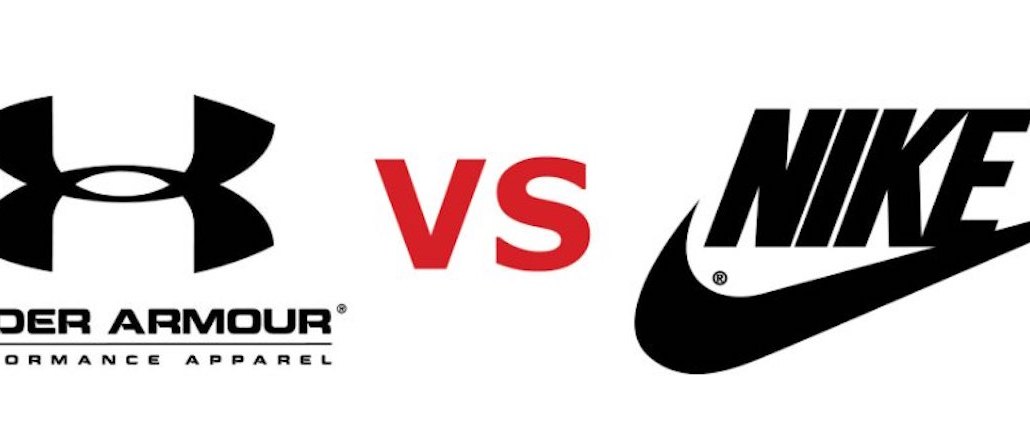
Under Armour is the second-largest sportswear brand, behind Nike, but the Baltimore-based company thinks it’s going to be No. 1 soon, thanks in large part to its ambitious effort in fitness tech.
Over the past three years, the brand has invested heavily in fitness technology.Under Armour chief digital officer Robin Thurston told Digiday that Under Armour is “building the biggest connected fitness platform in the world.”
The company’s first fitness acquisition took place in 2013, when it purchased MapMyFitness (founded by Thurston) at the price of $150 million. It then spent an additional $560 million to buy MyFitnessPal and Endomondo, both fitness apps. But the company didn’t lay the groundwork for its connected fitness business until last year, when it assembled a digital fitness community across its four mobile platforms: UA Record, MapMyFitness, Endomondo and MyFitnessPal.
At CES this year, Under Armour introduced two models of wireless headphones in collaboration with JBL, a smart shoe and an activity tracker, as well as HealthBox, a connected fitness system.
Thurston said that those products were designed so athletes no longer have to go through multiple registration experiences on different apps and all the data goes into a unified dashboard for their health.
“We constantly ask what’s the minimum set that someone needs to start his or her health? Collectively, all the initiatives showcase that UA products are consistent and integrated,” said Thurston.
The idea of integration sounds familiar: The new Nike+ app that is set to come out in June shares a similar model. Basically, Nike+ is a unified portal to the company’s three existing Nike+ apps: Nike Running Club, Nike Training Club and Nike SNKRS.
Under Armour doesn’t feel threatened. Thurston explained that the company’s fitness collection is more focused on health than the shopping experience, providing information and tools for workouts, activity tracking and nutrition, both in the gym and outside of the gym. Most importantly, Under Armour creates a personalized coaching experience with its consumer data. For example, if a user’s activities point to stress and his or her heart rate is 20 percent higher than the normal level, UA HealthBox will probably suggest a less intense workout or even no workout; otherwise, it would be dangerous for the user.
“I think this is very different from what Nike did with their strategy. It’s not a marketing-driven initiative. It’s a product-driven initiative,” said Thurston. “Nike is a formidable competitor, but we have a nice lead in connected fitness right now.”
Aside from Nike, digital fitness products like UA HealthBox also put Under Armour in direct competition with Fitbit and Apple in the growing wearables market. Connected fitness trackers are estimated to increase from more than $2 billion in 2014 to $5.4 billion by 2019, according to research company Park Associates.
“We expect to see a big jump for the 2015 year-end figure due to Fitbit’s success in the U.S., and we continue to expect the fitness trackers to drive the category’s growth in the next two years,” said Harry Wang, director of health and mobile product for Parks Associates.
As of 2015, Fitbit had approximately 9.5 million active users, compared to Under Armour’s 77 million (around 160 million registered users). “They are not even close to our scale and size,” said Thurston. “We don’t see Fitbit or Apple as our direct competitors. We still partner with them.”
More sports apparel makers are looking to integrate fitness sensor technologies into their mainstream products. By the beginning of 2018, expect new smart shoes and smart shirts to be more affordable and intelligent than what’s available now, said Wang.
Under Armour’s connected fitness business – consisting of digital advertising, digital fitness platform licenses and subscriptions – hasn’t yet become a big moneymaker for the company. In 2015, it only represented 1.3 percent of Under Armour’s total revenue of around $3.9 billion, according to the company’s annual report.
More in Marketing

Q1 ad rundown: there’s cautious optimism amid impending changes
The outlook for the rest of the year is a tale of two realities.

WTF is the American Privacy Rights Act
Who knows if or when it’ll actually happen, but the proposed American Privacy Rights Act (APRA) is as close as the U.S. has ever come to a federal law that manages to straddle the line between politics and policy.

Here’s how some esports orgs are positioning themselves to withstand esports winter
Here’s a look into how four leading esports orgs are positioning themselves for long-term stability and sustainability, independent of the whims of brand marketers.





